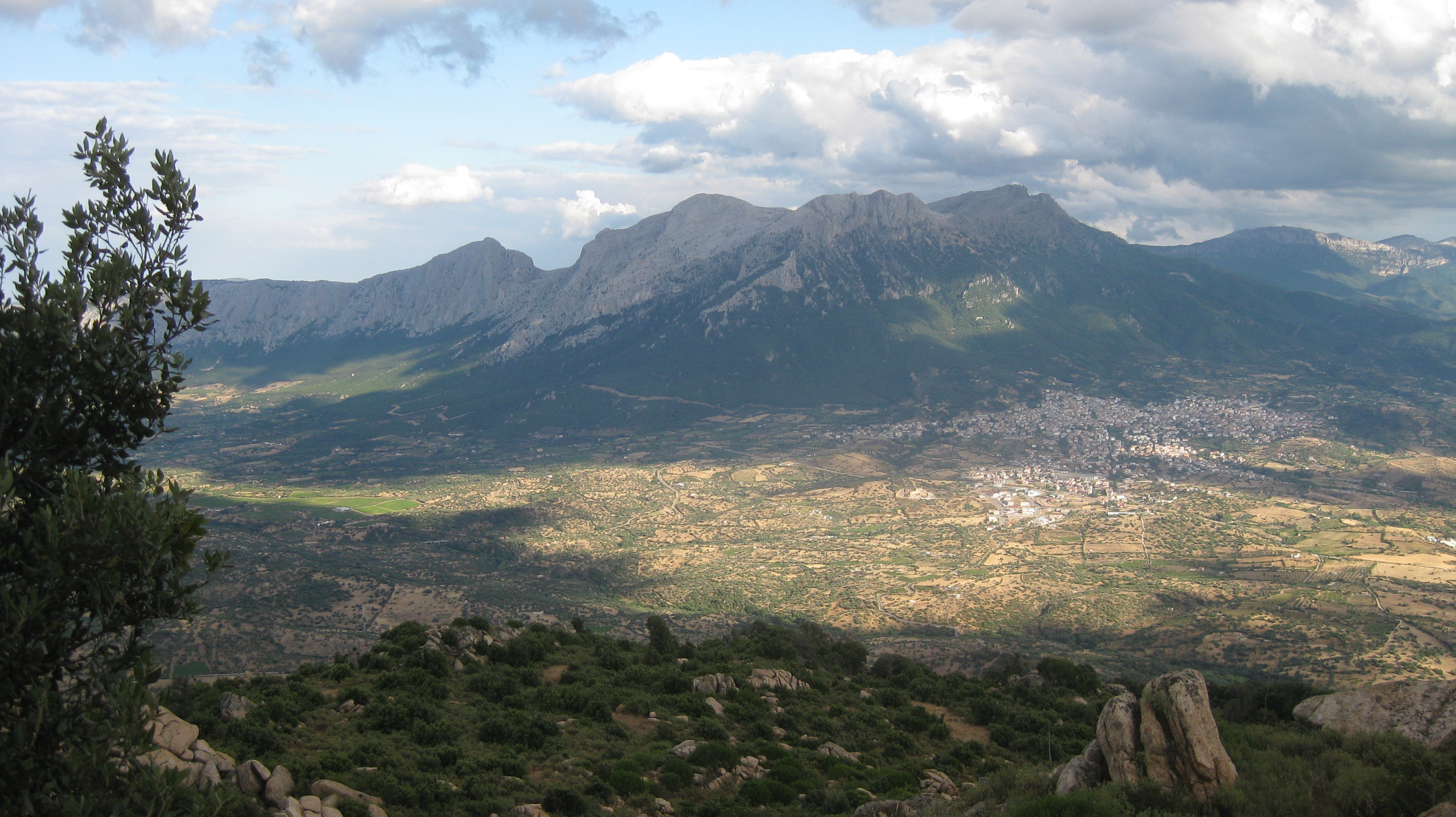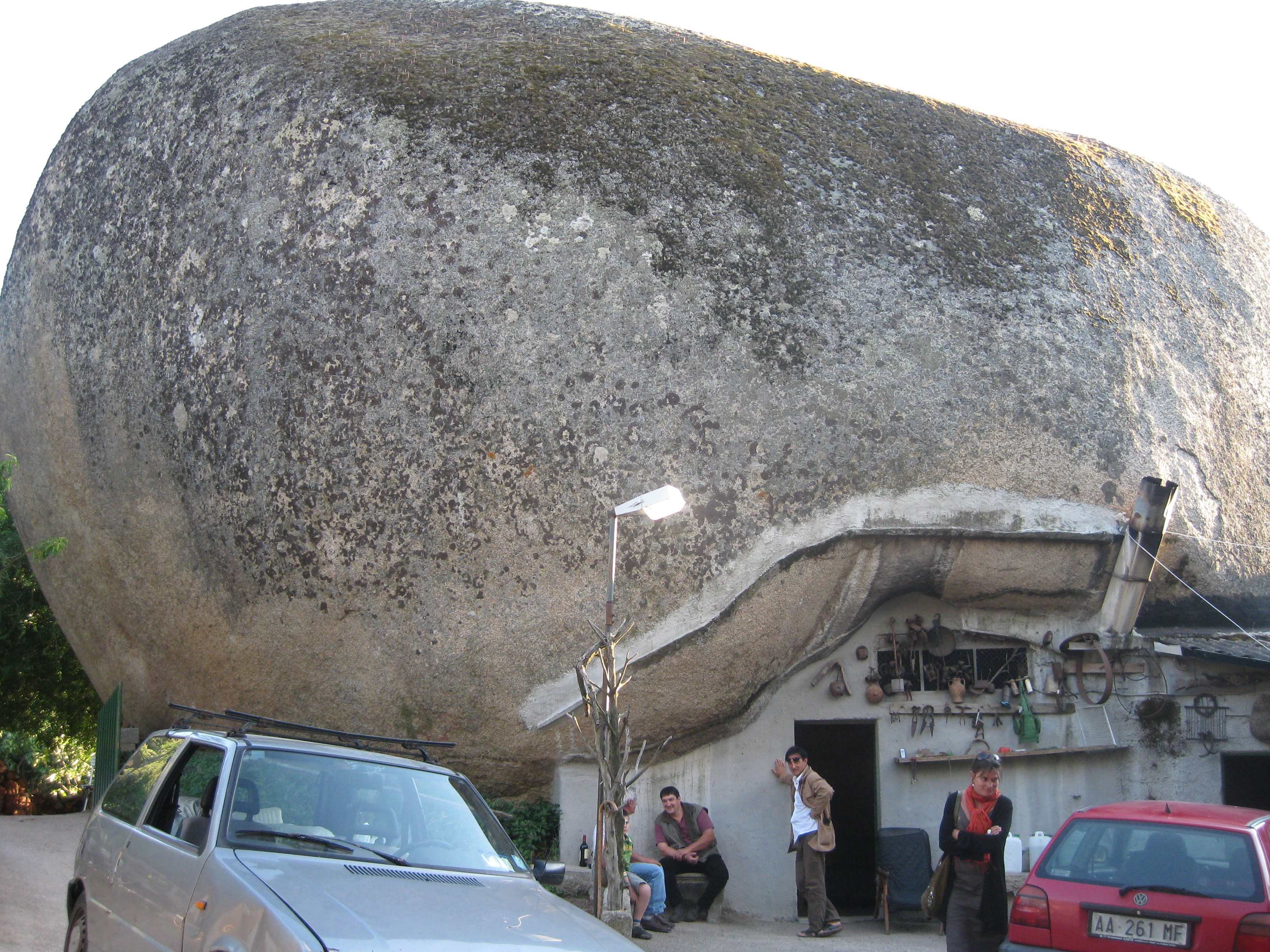
looking down from Monte Ortobene
I hadn’t been settled in long when Mario returned to tell me that his girlfriend and her mother had arrived and that they were all going to take a ride to see some “interesting houses” on the mountain if I wanted to join. I guess there are benefits to being the only guest. I soon discovered that the two women were actually French, from Paris, and had grown up in the 15th arrondissement/rue Cambronne area, which is exactly where I’m going to be living this summer. As they said, “C’est un petit monde.”

goat cheese farm in a cave
The first place Mario took us was a little further up Monte Ortobene, and was a small goat cheese farm. What made it remarkable was that it was based out of a rock. A cave had been carved, over the course of thousands of years, into the giant toadstool-shaped rock on the mountain, and a local family had decided to set up their small farm around it. The rock was now outfitted with a little door, and inside was a simple fridge, table, and some beds, along with racks of cooling cheese. I felt a little bit like I was in The Hobbit as I ducked the rocky ceiling to step inside the small abode. Around back there were the goats, who roamed free on the mountains by day and returned at night to sleep and be milked. A small pony ran to the fence to say hi as we walked by. As we tasted the local red wine (apparently many families here have their own tiny vineyards so they can make their own table wine) Mario talked to the men who ran the farm in Sard, the local language, a non-romance language, that is not related to Italian. As we were leaving, Mario explained that since the farm is based around a rock, it doesn’t really exist in the eyes of the local government, so the family doesn’t really own it, or have to pay any taxes.
Not much further up the hill, we stopped at an agriturismo, another family farm that hosts gatherings, food tastings, and campers at times, and were greeted by a 900-year-old tree (or so the plaque said). The owner took us into his “rock kitchen,” where ancient looking hams were aging and dusty bottles of wine lined the walls. Here we got to try to the local white, sweet wine and as my eyes adjusted to the dim light, I could see the many traditional Sardinian carnevale masks that were hanging on the walls.
Nuoro is reputed to be the “cultural capital” of Sardinia, and it certainly seems to be true. The next day I went to an archeological museum and an ethnographic museum (where I saw many more carnevale masks), and as he said goodbye Mario encouraged me to return, saying that he could help me find more contacts to explore the island, which he described as “a little continent,” in the future.






Amazing!